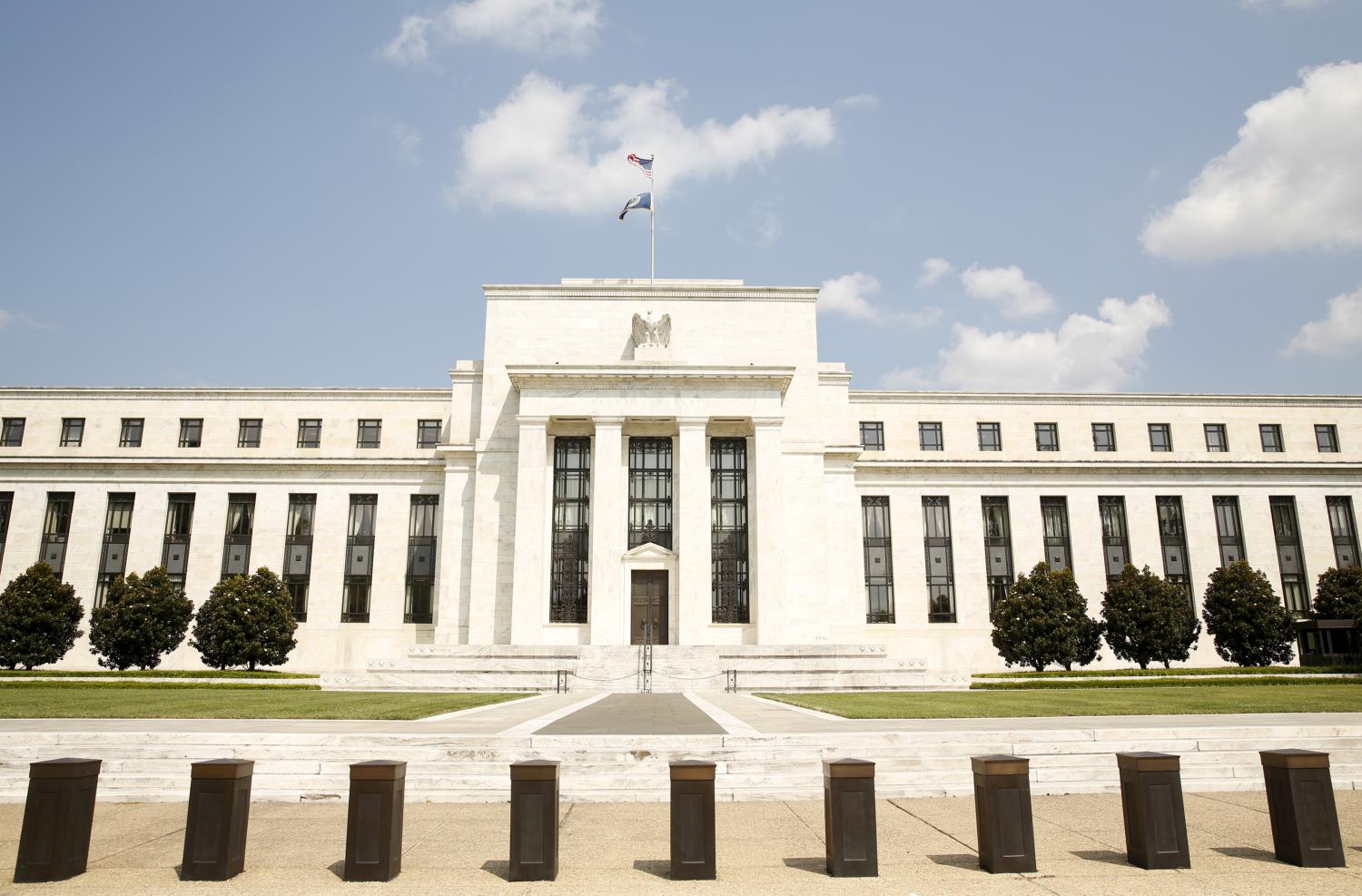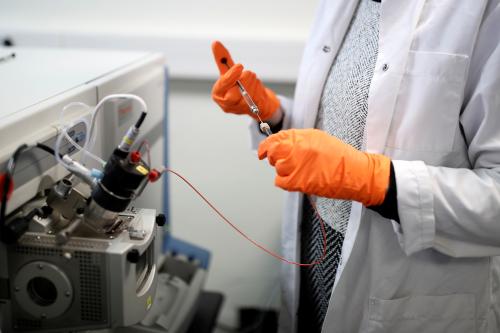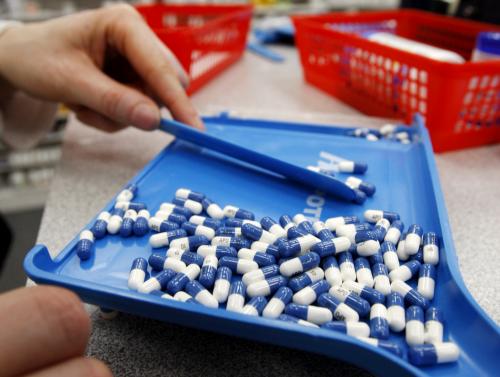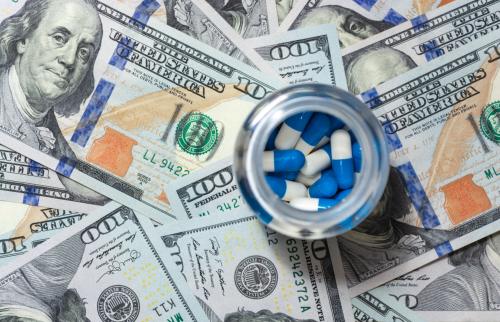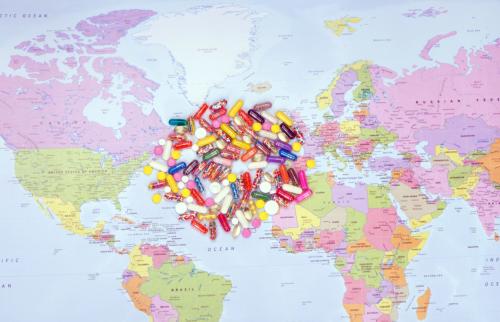This working paper was prepared for “Reining in prescription drug prices,” a May 2 event presented by the Center for Health Policy and the Hutchins Center on Fiscal and Monetary Policy at Brookings.
The United States, unlike many other industrialized nations, does not regulate the price of pharmaceutical products directly. There are advantages to this approach. The U.S. generic market is one of the most dynamic and cost-effective in the world due to competition between manufacturers. The inventor of a socially valuable patented drug may charge high prices in the U.S. market, and the ensuing profit incentivizes innovation that benefits consumers. Subsequent competition between substitute therapies, even those on patent, can push down these prices over time. Generic entry after patent expiration pushes down prices even further. This form of price discipline, generated by market forces, rewards the attributes and efficacies that consumers want. For example, if a particular drug is differentiated from its competitors in a useful way, it will be able to command a higher price.
Prices that reflect value create exactly the incentives society desires for innovation. If the forces of competition are always strong, then the way for a pharmaceutical company to earn high profits is to invent a valuable treatment. If competitive forces weaken, then high prices for drugs may not reflect value but instead a lack of market discipline, sometimes exacerbated by regulations that enable or maintain high prices. When manufacturers can earn high profits by lobbying for regulations that weaken competition, or by developing mechanisms to sidestep competition, the system no longer incentivizes the invention of valuable drugs. Rather, it incentivizes firms to locate regulatory niches where they are safe from competition on the merits with rivals. The U.S. system performs well when competitive forces are strong, as this yields low prices for consumers as well as innovation that they value.
Weak competitive forces are more damaging to consumers in the pharmaceutical sector than some others. Patients in the U.S. are typically both insured and uninformed about therapeutic substitutes for the medications they take; thus, without effective rules and frameworks provided by the government, they face difficulty in creating market forces on their own. Without market pressures, drug makers may sell at arbitrarily high prices to insured consumers. Therefore, the policy environment in which those consumers shop is critical to maintaining effective price competition.
Without a return to competitive conditions in this sector, expenditure will continue to grow. We are already hearing calls for regulation of pharmaceutical prices and seeing legislation that proposes price regulation.[1] It is very difficult to devise regulation that encourages innovation in a fast-changing industry. Regulators may be uninformed about valuable research, be captured by the industry, or lack the resources to keep up with changes in science or the cost of production.[2] Because innovation is hugely valuable to consumers, we are hesitant to recommend government regulation of pharmaceutical prices as a solution to the current problem of high and growing pharmaceutical expenditures. The regulatory system in the U.S. is designed, in principle, to enable vigorous and effective competition that will bring down drug prices, particularly of any drug that faces a competitor or substitute. Over the last 10-15 years, however, industry participants have managed to disable many of these competitive mechanisms and create niches in which drugs can be sold with little to no competition. We argue in this paper that the first step toward bringing down pharmaceutical prices would simply be to fully apply the existing rules we already have. For example, speedy and effective entry of generic products, and financial incentives for consumers to choose treatments that have offered significant discounts are both part of the existing regulatory framework and result in lower prices. Both forces, however, have been greatly attenuated or stymied by the actions of pharmaceutical manufacturers. Enforcement of existing regulations that make markets more competitive will reduce pharmaceutical expenditures. The one type of market we will not address in this paper is the case of the patented, valuable medication that has no therapeutic substitutes because it represents a breakthrough in treatment. We refer the reader to the companion piece by Frank and Zeckhauser for a discussion of pricing when a drug faces no competition. We note that industry participants who benefit from the status quo may work against a return to competitive markets. If pharmaceutical firms and other market participants block policies that restore competition, then calls for more stringent regulation will re-appear and may well be successful.
In this paper, we outline three major barriers to effective competition in U.S. pharmaceutical markets: biologics, the fastest growing segment of drug spending; the demand side imperfections of market participants; and older drug markets, where firms with small portfolios have recently instituted drastic price increases for essential drugs. After discussing these problems in some detail, we propose specific policies that would remedy or remove these barriers to competition, thereby lowering prices while incentivizing targeted innovation to the most valuable unmet medical needs.
The authors did not receive financial support from any firm or person for this article or from any firm or person with a financial or political interest in this article. They are currently not an officer, director, or board member of any organization with an interest in this article.
The Brookings Institution is committed to quality, independence, and impact.
We are supported by a diverse array of funders. In line with our values and policies, each Brookings publication represents the sole views of its author(s).



